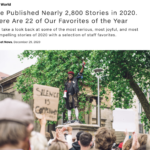
Author Archives for Felicidad


András Szántó announced as Keynote Speaker for FRAME 2022 Annual Conference
Leave your thoughts <p>András Szántó will be one of two keynote speakers at the 2022 FRAME Annual Conference on Wednesday, May 18 in Marseille. FRench American Museum Exchange (FRAME) is a consortium of 32 major museums in France and North America that promotes cultural exchange in the context of museum collaborations.</p>
Introducing the Spirit of Ecstasy Challenge
Leave your thoughts <p>Muse, the Rolls-Royce Art Programme, has announced the inaugural the Spirit of Ecstasy Challenge, a new initiative celebrating both tradition and innovation. This biennial design project will invite three emerging design visionaries to create unique works inspired by the ethos of Rolls-Royce, as symbolized by the Spirit of Ecstasy, the sculptural figurine that adorns the bonnet of every Rolls-Royce motor car. Through the project, Rolls-Royce seeks to discover new and emerging talents in the design world and take them on an exciting journey.</p>
Sondra Perry: Lineage for a Phantom Zone at Fondation Beyeler
Leave your thoughts <p>Muse, the Rolls-Royce Art Programme presents the inaugural artwork created for the Dream Commission by moving image artist Sondra Perry. On public view for the first time from February 13 through March 13, 2022 at Fondation Beyeler in Basel, Switzerland, Lineage for a Phantom Zone is a new immersive artwork which explores themes of lineage, memory and longing, using dreams as a space for reconfiguring history.</p>
Taking a more introspective look: Cecilia Alemani in conversation with András Szántó
Leave your thoughts <p>Ahead of the opening of the 2022 Venice Biennale, András Szántó spoke with the curator Cecilia Alemani, via Zoom, about the ideas and process behind the exhibition and how it relates to our moment. Alemani anticipates that this edition will be remembered “as the Covid Biennale, the women Biennale, and hopefully the fun Biennale of rebirth and togetherness, after so many months of being apart.”.</p>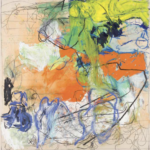
The body gets lost in the gesture: Rita Ackermann in conversation with András Szántó
Leave your thoughts <p>Some 30 years after they first met, painter Rita Ackermann and András Szántó reconvened in 2021 for an interview for ArtAsiaPacific Magazine and the Burger Collection, reflecting on Ackermann’s trajectory as an artist. Their conversation touches upon the experience of emigration, the influences of classical training, the evolution of Ackermann’s large-scale expressionist paintings, and connections between the artist’s personal biography and public role.</p>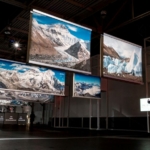
“Art Institutions Aren’t Doing Enough to Lead on Climate Change. Here’s How the Industry Should Rethink Its Responsibility”
Leave your thoughts <p>In this Op-Ed for Artnet News, co-authors András Szántó and Orville Schell weigh some of the art world’s most environmentally harmful practices and explore how the Helen Frankenthaler Foundation is taking one key step with the launch of the Climate Art Awards.</p>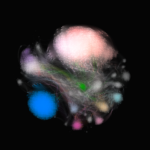
Barabási Creates First Network Visualization of NFT Market
Leave your thoughts <p>In a guest essay for The New York Times (May 7, 2021), Albert Lászlo Barabási published a series of network visualizations based on the Super Rare NFT platform. The images reveal the extreme concentration of the NFT market at this early stage of its development, and they offer an opportunity for reflection on the evolving systems of art. This is a perfect moment for a network scientist who cares about art. The data on the blockchain is there for all to see and analyze. The results are not only stunning, but they offer a window into sociological, commercial, and ultimately aesthetic processes that we have never before attempted to grasp with data-driven empiricism.</p>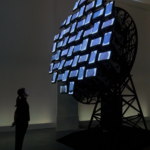
Fifth Audemars Piguet Art Commission, by Phoebe Hui
Leave your thoughts <p>The fifth Audemars Piguet Art Commission, by Hong Kong artist Phoebe Hui, has been unveiled at the Tai Kwun Center in Hong Kong, ahead of Art Basel, with Ying Kwok serving as guest curator. Responding to the commission’s theme of complexity and precision, the installation is titled The Moon is Leaving Us, because the Moon is slowly drifting away from the Earth. Its main part is an assembly of 48 screens which move in unison. Moving in front of each screen is a fragmentary image of the moon. Elsewhere in the space, a drawing robot, Selena, reconstructs the side of the moon we cannot see. Following the previous four commissions, Hui’s work demonstrates how art can help us negotiate the mysteries of the universe.</p>
Rolls-Royce Dream Commission Short-form Works Announced
Leave your thoughts <p>On February 26, 2021, Muse, the Rolls-Royce art programme, in partnership with Serpentine Galleries and Fondation Beyeler, announced the four new moving image works created by the nominees for the Rolls Royce Muse Dream Commission: Sondra Perry, Beatriz Santiago Muñoz, Martine Syms, and Zhou Tao. A single artist will be announced as the winner of the Dream Commission next month and invited to develop their concept. The long-form commission will debut later this year.</p>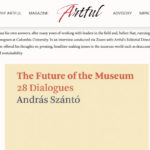
The Future of the Museum: 28 Dialogues review by Stefan Kobel in Handelsblatt
Leave your thoughts <p>Stefan Kobel from Handelsblatt has published a review of the András Szántó’s new book, The Future of the Museum: 28 Dialogues. In it, Kobel writes, “The volume is a treasure trove of analyses, food for thought and models for the future. In addition, the respective introductions of the interviewees and their narratives from their own world of experience and biography make for exciting reading.”</p>